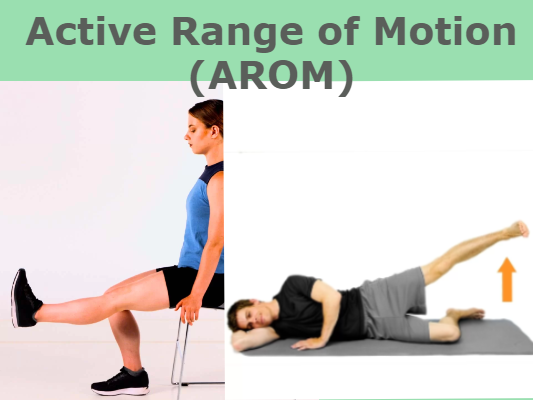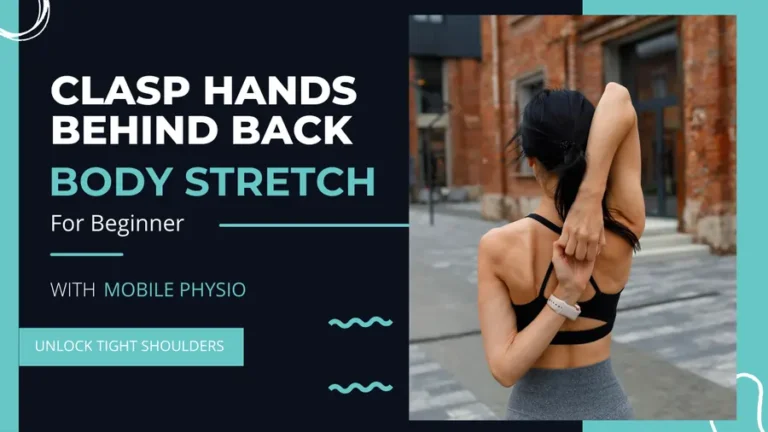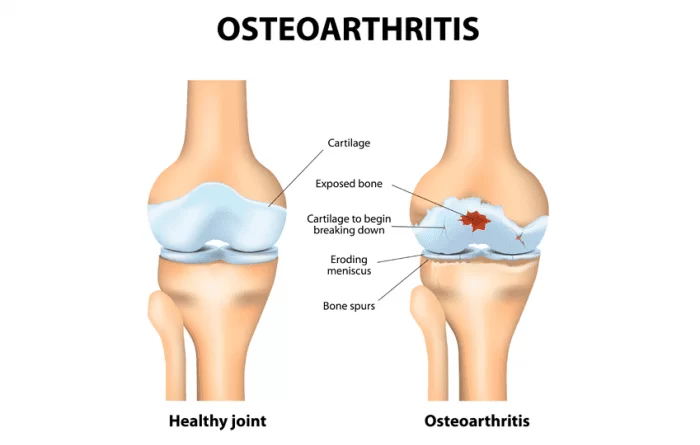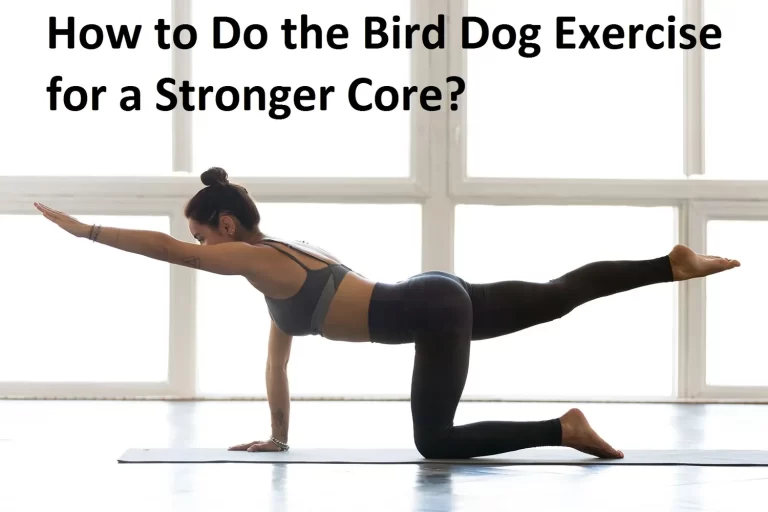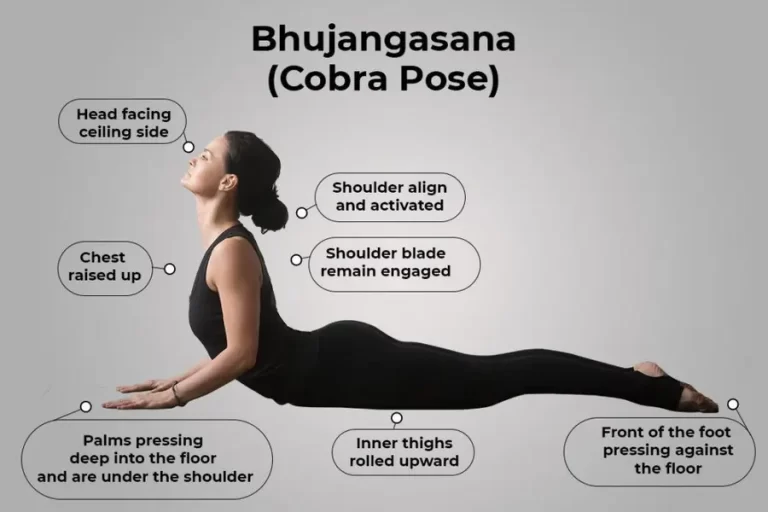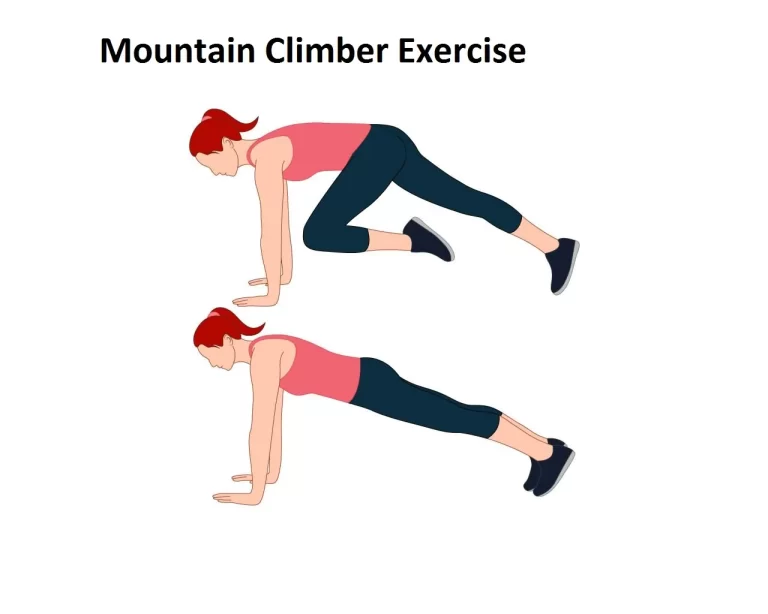Active Range Of Motion (AROM) Exercises
Table of Contents
Introduction
Active range of motion (AROM) exercises are exercises that you perform yourself, using your own muscles. They are the most common type of range of motion exercise, and they are used to improve joint function, strength, and flexibility.
AROM exercises can be done for any joint in the body, including the shoulders, elbows, wrists, hips, knees, and ankles. They are often used in physical therapy to help people recover from injuries or surgery. AROM exercises can also be used to improve athletic performance or to prevent injuries.
There are many different types of AROM exercises. Some common examples include:
- Arm circles
- Leg swings
- Neck rotations
- Shoulder shrugs
- Hip circles
- Ankle rolls
AROM exercises can be performed in a variety of ways. You can also use weights or other resistance bands to make the exercises more challenging.
These exercises are frequently recommended for those who have had accidents, surgeries, or other disorders that impair joint mobility. AROM exercises are advantageous for people who desire to improve their general physical fitness and ward against ailments in the future.
AROM exercises’ major objectives are to improve flexibility and maintain or restore normal joint function. Exercises that actively move the joints assist to strengthen muscular strength, improve blood flow, reduce stiffness, and improve the flexibility of the muscles and tendons that surround the joints.
AROM exercises may be done for the shoulders, elbows, wrists, hips, knees, and ankles, among other joints in the body. When performing the exercises, the person usually moves the joint through its complete range of motion without inflicting pain or discomfort. Depending on the person’s condition, the range of motion may be initially restricted, but it eventually expands with continued use.
What is the range of motion(ROM)?
Range of motion (ROM), which refers to how far a physical component may move around a joint or fixed point, is the range of motion that a joint is capable of. During active ROM (independent) AROM or passive ROM accessorial PROM, the joint range of motion is assessed.
ROM is typically calculated as part of an assessment or course of physical therapy. Depending on the body component and individual variances, normal values change.
Range of motion(ROM)- types
- Passive range of motion
- Active-Assisted Range of Motion
- Active range of motion
What is the Active Range of Motion (AROM)?
Active range of motion (AROM) is the ROM that is attained when the contralateral muscles contract and relax and produce joint movement. To further enable elbow flexion, for instance, an active range of motion requires tightening the biceps while relaxing the triceps. Usually, the active range of motion is restricted more than the passive range of motion. When the patient is able to deliberately synchronize contraction, control, and movement, it is often done by them.
You may move a portion of your body in this area by using your muscles. They function without outside assistance. For instance, stay within your active range of motion while stretching a muscle by raising your arm over your head.
When you engage your muscles to move various body parts, this is known as active ROM. You can move without the aid of a tool or another person. The biceps, for instance, should be contracted (shortened) while the triceps, at the same time, should be released when bending the elbow. Active ROM assesses your independence in carrying out this task.
You depend on active ROM when you can move on your own following an injury or surgery and with little to no protection against further harm. Active ROM takes the form of strength training.
You rely on active ROM when, following an injury or surgery, you can move on your own and want little to no protection from further harm. Active ROM takes the form of strength training.
Features of Active Range of Motion Exercises
All joints in the body, including the neck, shoulders, elbows, wrists, fingers, hips, knees, ankles, and toes, may be worked with active ROM exercises. Depending on the joints used, you can perform this exercise either sitting or standing. To keep or increase overall joint mobility, active ROM exercises can be added to a regular exercise program.
Range of motion exercises occur in 3 planes:
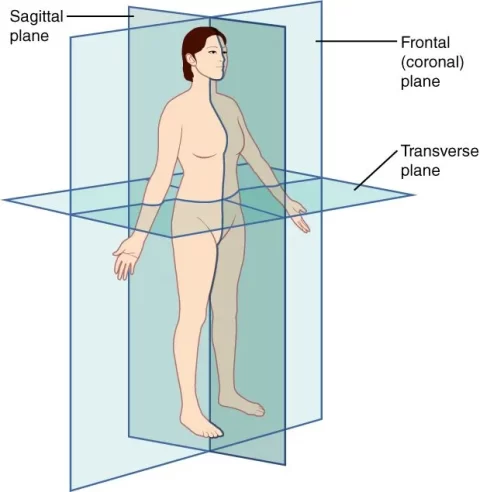
- Sagittal plane: This is a line that crosses the body from front to back and divides it into left and right halves.
- Front plane: This line runs from side to side of the body, dividing it from side to side from front to back.
- Transverse Plane: This plane is the horizontal line that divides the body into upper and lower parts.
Difference between active and passive exercises
Active exercises:
- The patient engages in active activities on their own, without any help.
- The patient moves the joint through its complete range of motion by using their muscles.
- It can aid in preserving or enhancing joint mobility, reducing muscle atrophy, enhancing balance and coordination, and easing joint discomfort, swelling, and inflammation.
- Depending on the joint being worked, these exercises can be performed standing or sitting.
- It can be performed as a component of a regular exercise program to preserve or enhance joint mobility.
Passive exercises:
- A healthcare professional such as a therapist will carry out passive exercises.
- The patient does not fully extend the range of motion of the joint using their muscles.
- For the patient, the therapist or medical professional moves the joint through its complete range of motion.
- It can aid in preserving or enhancing joint mobility, reducing muscle atrophy, enhancing circulation, and easing joint discomfort, swelling, and inflammation.
- Depending on the joint being worked, they can be done lying down or sitting up.
- In a physical therapy program, passive exercises are performed to aid patients in their recovery from an accident or surgery.
What should someone be aware of about active range of motion training?
Follow the exercise instructions provided by your therapist. Before doing the exercises on your own, practice them with your doctor. Exercise often, or as often as your doctor instructs.
Every time, do the exercises in a coequal order. To recall the moves more easily, go from head to toe. Stretch your neck out first. Then, instruct each section of your body to move in the direction of your feet. Perform the same exercises on the other side after finishing each set of drills on the first side. Gently, evenly, and slowly move. Don’t make sudden or abrupt movements.
If pain strikes, stop. Even though the initial soreness is natural, it is not unpleasant. Over time, pain can be reduced with consistent activity.
Benefits of active exercises
- Reduces joint stiffness
- Promotes joint mobility
- Improving blood circulation
- Improves physical flexibility
- Improves all-around physical fitness
- Suitable posture
- Increases coordination and balance
- Releases the muscles
Risks of active exercises
- Active range of motion exercises often pose little hazards, but it’s crucial to carry them out properly to prevent harm.
- Overuse injuries, muscular strains, and joint discomfort brought on very tricky movements are a few concerns.
- You should avoid overdoing activities if you have any prior injuries. Before creating any training plans, it is preferable to speak with a physiotherapist or medical specialist.
Contraindications of active range of motion exercises
- Inflammation or Recent wounds
- Extreme joint discomfort or instability
- Several illnesses, including osteoporosis and arthritis
- Injuries sustained in the past: These may cause excruciating discomfort and aggravate the disease.
Active range of motion exercises examples
Neck exercises:
- Start position: You can either stand or sit while starting. Please turn to the front. Your shoulders must be relaxed and straight.
- Tilt your head forward and backward: Shift your head to the left and right. Reduce your head slowly until your chin rests against your chest. Resuming the original position, raise your chin. Tilt your head back as far as it will go to view the ceiling. Put your head back in the starting position.
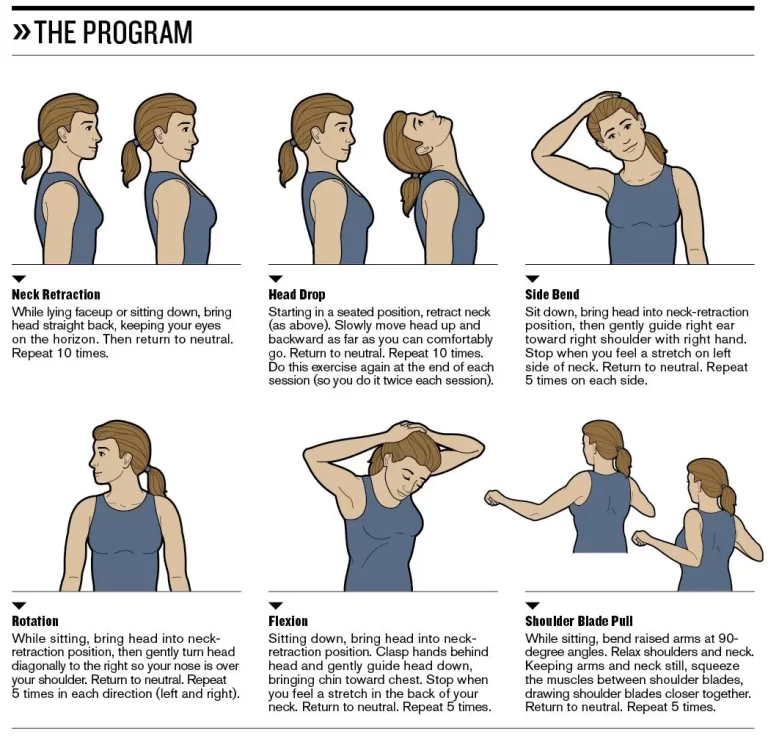
- Tilt your head left and right: Left and right head tilts will cause your ears to go closer to your shoulders. Maintain a shoulder-to-ear distance. Steady your shoulders. Bring your head back to the beginning position once more.
- Head rotation: I’ll turn my head so I can peek over your shoulder. Your chin should be touching your shoulders as you droop. Keep your shoulders back from reaching your chin. Check the distant horizon.
Shoulder and elbow exercises
- Start position: Standing or sitting in the beginning. Put your arms at your side, straight down. Your palms should be facing the interior of your body. It is advisable to utilize a chair without armrests if you are sitting down.
- Shoulder flexion and extension: Raise your arms over your head and then out in front of you. Try to raise your arm such that the inside of it brushes your ear. As far back as you can, please. Go back to the beginning place.
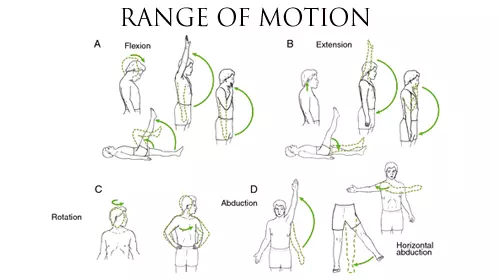
- Side-to-side shoulder movement: Elevate your arms to your sides, then elevate them as high as you can above your head to do a side-to-side shoulder movement. Grab the shoulder on the other side with your arms out in front of you. Regain the starting position by raising your arms.
- Shoulder rotation: Rotate your shoulders such that they are lifted up towards your ears as if you were shrugging. Back off to the beginning posture while letting your shoulders rest. Retract your shoulders. then let free one more. Move your shoulders in a gentle circular motion. After that, slowly turn your shoulders in the opposite direction.
- The elbow bends: The elbows are bent: Bring your elbows palms forward. Reach out and place your fingertips on your shoulder. Regain the starting position by raising your arms.
Arm and wrist exercises
- Start position: Start by sitting down. Put your forearms on a table, knee, or other flat surface while bending your elbows. Ensure that your wrists are hanging freely to the sides.
- Wrist bend: Bend your hand till it meets your wrist, causing your fingers to point upward. Then, stoop your hands so that the tips of your fingers face the ground.
- Wrist rotation: Rotate your wrists by waving your hands back and forth. Then move your hand in a single direction in a circular manner. Turn your hands in the other direction, in a circular motion.
- Palm up, palm down: Stay in the same position, but reposition your bent elbow at your side. Put your palms on the ground. Hold out your hands with your palms up towards the sky. your hand out in front.

Hand and finger exercises
- Start position: Start by either sitting down or standing up. Put your hand on the front of a table strut.
- Finger bend: Fist tightening will cause your fingers to bend. Then relax and spread your hands wide.
- Spread your fingers: With your hands open, spread them as widely as you can. Reposition your finger.
- Finger and Thumb Touch: Touch the tips of your fingers with your thumbs like you would the pads of your fingers.
- Thumb-to-palm stretch: Stretching the thumb to the palm entails moving the thumb to the palm. Again tilt it to the side.
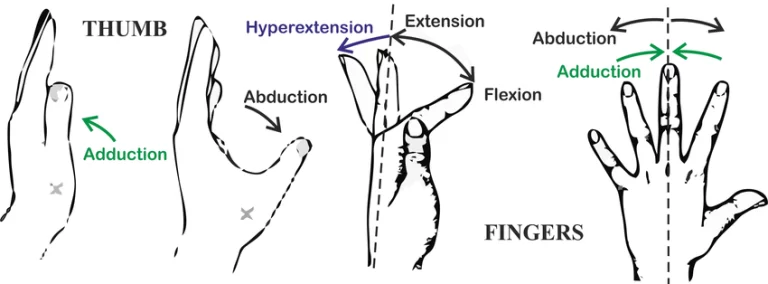
Hip and Knee Exercises
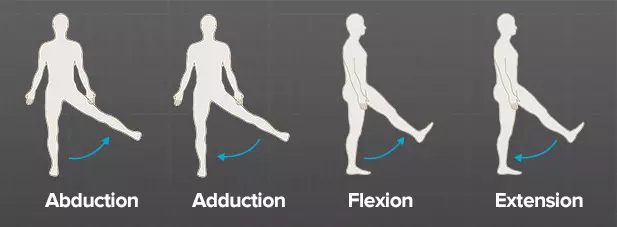
- Start position: Only carry out hip exercises as advised by your physician or physical therapist if you or a loved one has undergone hip surgery or injury. Lay down on the bed with your feet apart.
- Squats and hip raises: Toes pointed. Slowly bending your knees, get them as near to your chest as you can. Put your legs back in a neutral position on the bed by straightening them.
- Lift leg: Lift a leg by raising it six to twelve inches off the floor. Hold it there for a while and think about it. Reposition your feet on the mattress.
- Side-to-side leg movement: Leg movement from side to side: Bend your legs so that your toes are pointing upward. As far to the side as you can move your leg.
- Leg rotation inward and outward: Put your flat feet on the mattress. Your big toes should contact the bed as you rotate your feet towards the center. Then, spread your feet out till your little toes are in contact with the mattress.
- Bend the knee inward and outward: Lay on your back in bed and bend one leg inward and one outward. You should squat with your knees bent and your feet flat on the mattress. Your buttocks should be closer to your heels. Return your feet to their original posture.
Ankle and foot exercises
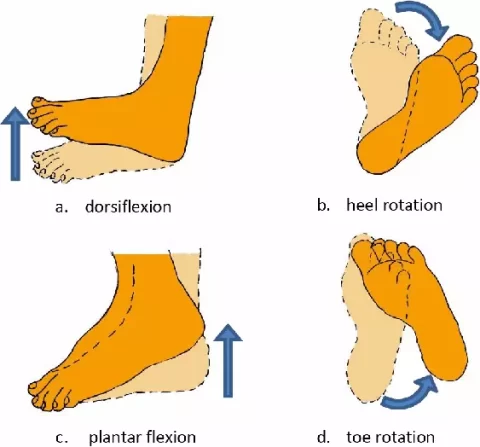
- Starting position: Place your feet flat on the floor while sitting on a chair.
- Ankle bend: Lift your heels as high as you can while keeping your toes on the ground. Take your heels off. Then, while maintaining your heels on the ground, elevate your toes as high as you can.
- Ankle rotation: Lifting your feet off the ground will help you rotate your ankles. Turn your ankle in a clockwise direction. Then move your ankle in the other direction in a circular motion.
- Toes bent: Your toes need to point downward towards the bottom of your foot. Set them straight. To the ceiling, roll up. then unwind once again.
- Toe spread: Expand your toes. Return them.
Summary
Active range of motion (AROM) exercises are an important part of any fitness routine. They can help to improve joint function, strength, and flexibility. AROM exercises are also often used in physical therapy to help people recover from injuries or surgery.
AROM exercises can be done for any joint in the body, and they are relatively easy to learn. However, it is important to warm up before doing AROM exercises and to listen to your body and stop if you feel any pain.
AROM exercises are a safe and effective way to improve your overall fitness and well-being.
FAQs
What are the workouts for active range of motion?
Only the patient can perform exercises for active range of motion since they are required to move the joint independently. Even if these exercises might not be possible at the beginning of physical therapy, the goal of treatment is to provide the patient with the capacity to exercise independently.
What is Range of Motion Training, Active and Passive?
Your active range of motion is, for instance, when you raise your arms over your head to stretch your muscles. Motion inertia (PROM). This is the region where movement may happen when someone or something moves your body, such as a physical therapist or a massage therapist.
What advantages do AROM workouts have?
Training your active range of motion benefits:
increases the flexibility of the supporting tissues, muscles, and joints. Reduce numbness and pain. prevents contractures and muscle atrophy. increases synovial fluid production to maintain healthy cartilage and supple tendons.
What three sorts of ranges of motion are there?
The ability of the patient to freely move the joint is what distinguishes the three fundamental categories of range of motion: passive, active, and active.
What function does AROM serve?
AROM is used to discover potential symptoms, such as pain, and to assess their kind, location, and intensity. Additionally, we can search for compensating methods to obtain that mobility as we see how freely a patient can move in a certain joint.
Reference
Active Range Of Motion (AROM) Exercises – Mobile Physio. Mobile Physiotherapy Clinic. https://mobilephysiotherapyclinic.in/active-range-of-motion-arom-exercises/
https://www.physiotattva.com/therapies/understanding-active-range-of-motion-exercises-therapy. (n.d.). https://www.physiotattva.com/therapies/understanding-active-range-of-motion-exercises-therapy
Top Active Range of Motion Exercises for Upper and Lower Body | Blog by CB Physiotherapy, Active Healing for Pain Free Life. (n.d.). Cbphysiotherapy. https://cbphysiotherapy.in/blog/top-active-range-of-motion-exercises-for-upper-and-lower-body

